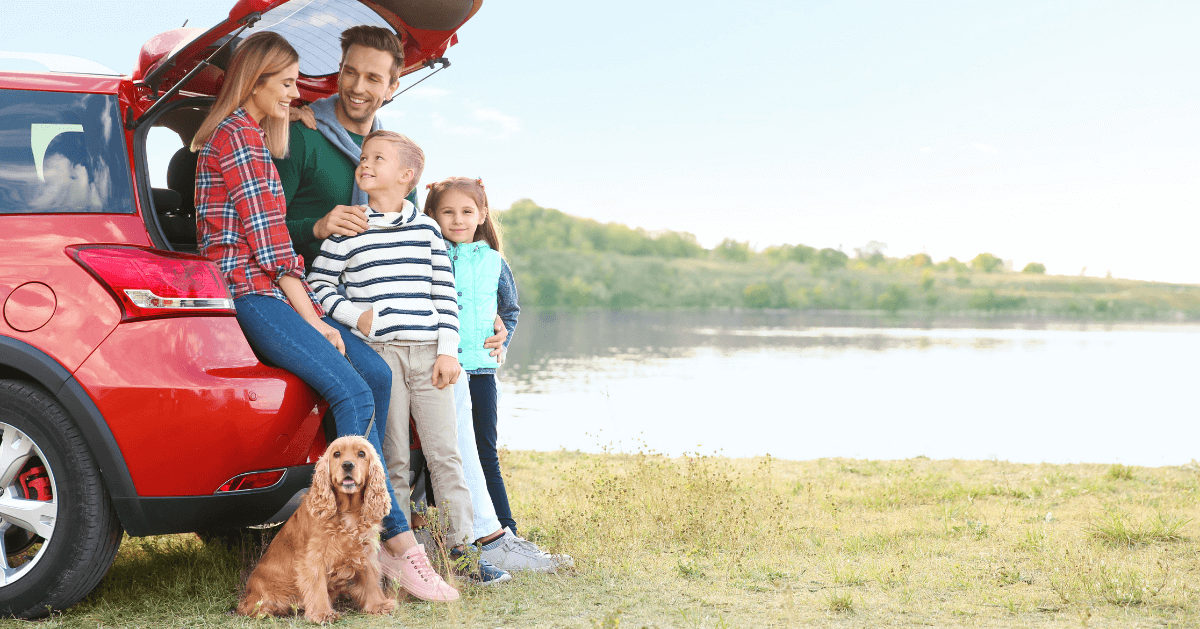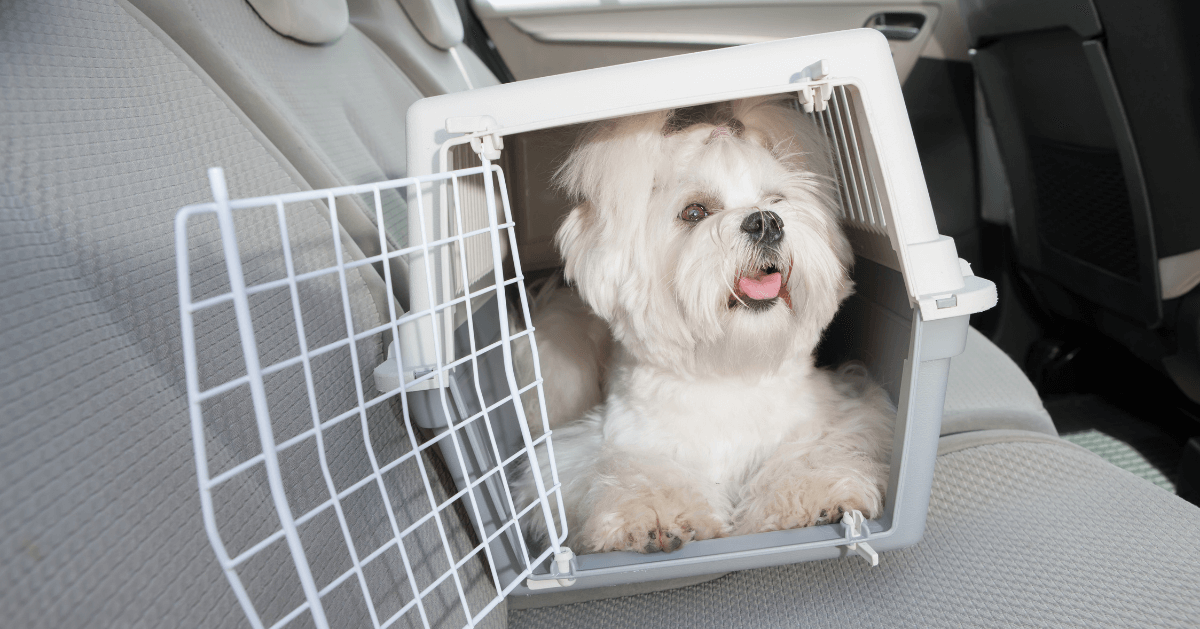
Happy Dog Expert: How to Reduce Your Dog's Stress When Travelling in a Car
Going on holiday with your dog can be a wonderful experience, especially if they enjoy travelling as much as you do. However, not all dogs respond well to travel. Some dogs get very stressed during the journey; in other cases, they may begin to tremble when approaching the car, and they may not tolerate even entering a travel carrier.
By Patricia Darder, Health Behaviourist and Happy Dog Expert
What can we do to prevent travel-related stress? 5 top tips
There are a number of preventative measures that can be taken to minimise the stress for your dog when travelling by car or other means of transport. Here are the most important steps to take to keep your dog calm when travelling:
1. Help your dog get used to new situations
Good socialisation at an early age is key to getting your dog used to new environments, experiences and situations. If you get your puppy used to exploring new environments and take them to new and varied places - where they'll encounter new people, pets, sounds, and smells - in the early stages of their development, it will make it easier for them to adapt to new situations without difficulty. This confidence will make travelling with your dog inside a vehicle or staying in a new environment much easier.

2. Introduce puppies to the car at an early age
Likewise, we should introduce puppies to travel as soon as possible. It is not the same to make the first trip when your puppy is a few months old as when they are several years old, when your dog has established their routines and situations they are familiar with. Thus, although the trips are not necessarily required, it is advisable to take short trips by car with your puppy regularly.
It can be useful to take trips of progressive duration and intensity (so they are used to various movements and speeds), so as to promote natural habituation to the situation of being in the car, as well as to its noise and movement.
3. Ensure your dog is comfortable
Provide maximum stability, calm and comfort to your dog during the journey. For this, it's best to choose a restraint that allows your dog to move as little as possible during the journey, such as in a travel carrier or harness. Avoiding speaking in a loud voice or playing the radio at a high volume. Control the temperature so that your dog does not suffer from heat stress.
4. Get your dog used to their carrier or harness
This process is crucial, and it should be done calmly and without haste. This should be done at home, and whenever possible its use should be encouraged with praise, a treat or a toy. It is important to bear in mind that if the use of the carrier/harness is not associated with a familiar and pleasant experience, placing the dog inside for travel can be stressful in addition to any stress caused by the trip itself.
5. Always use positive training methods
Encourage your dog to enter the car of their own accord. We should never force a dog to get into a car - it is important to associate the car with a pleasant experience. To do this, we should start by bringing your dog close to the car with the engine off, using praise or with play to encourage them. In these early stages you can play around the vehicle, and even open and close doors while playing with them. Once your dog accepts being close to the car without problems, repeat the process with the car engine running.
When your dog is comfortable with the noise of the car, it is time to move part of the game inside the vehicle (for example, if we play ball we can throw inside the car occasionally), starting with the most accessible areas and ending with the back and the innermost areas. The game can be replaced by treats, so that initially your dog is rewarded for being close to the car and then progressively bring the dog closer to the inside. Once you get your dog to enter the car without hesitation, the next step is to close the doors and open them a few seconds later, all the time encouraging your dog with strokes and praise. Subsequently, gradually increase the time your dog spends in the car, checking that they remain calm throughout.

How do I get my dog used to staying in a travel carrier?
For some dogs it may take a bit of time to get used to the carrier, but by giving your dog time and acting appropriately, the carrier can become a safe haven for your dog in a stressful situation such as a trip by car or a taking your dog to the vet. Always ensure that you have the appropriate-sized travel crate or carrier for your dog.
- Once purchased, the travel carrier should be presented to your dog. It is advisable to leave it in a central, accessible area of your home where your dog will see it. Reward your dog when they investigate the carrier with praise or stroking. You can also encourage them to get closer by leaving food treats right next to the carrier.
- To make it easier for your dog to get inside, initially remove the door leaving the opening completely free of obstacles. Place a bed or comfortable family material inside for your dog (for example the bed that they sleep on) to encourage use of the carrier for resting and relaxation.
- You can also consider using ADAPTIL Transport Spray to give your dog extra comfort and support during travel and visits to the vet. It is clinically proven to reduce panting, trembling and restlessness during travel. This should be sprayed in the carrier or the car, 15 minutes before letting your dog in. Never spray directly on your dog or in the car/carrier while your dog is in there.
- For dogs that need more support, using a ThunderShirt can help as it applies gentle pressure to your dog, helping your dog to feel more settled when in the car. You can also apply ADAPTIL Transport spray onto your dog's ThunderShirt! Both products work in different ways and compliment each other to help calm your dog.
- In addition to using treats, you can introduce toys that your dog likes, or chews, again to encourage exploration of the space and to teach them that choosing to enter the carrier results in rewards. Initially, encourage your dog to enter the space and only pull the door to but don't shut it completely.
- When your dog is fully accustomed to entering and using the carrier with the door open, begin to close it for short periods of time; increase this time if your dog is able to remain inside quietly with the door closed (for example, start with a few seconds, then a minute, two minutes, etc. all the time checking that your dog remains calm inside). Each time the door is opened praise your dog, stroke them or give them a treat.
- The last step is to get your dog used to spending small periods of time inside the travel carrier inside the car. Initially when the car is stationary, and later when the engine is running.

What other measures can I take to reduce dog travel stress?
Sometimes it may be useful or necessary to use nutraceuticals or medications to reduce your dog's stress or anxiety about the trip. Speak to your veterinarian who will be able to advise you about what would be the most appropriate way to support your dog.
Would you like to receive more specialist and expert advice from our team of Happy Dog Experts? Make sure to explore our full range of articles online. You can also get in touch to ask any questions, or stay informed with our latest tips, advice, and Q&As by signing up to our newsletter.









































